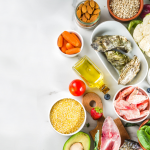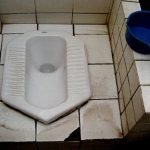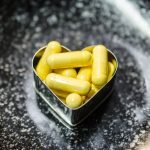Natural Treatments for Hemorrhoids
Nirala Jacobi, ND
Hemorrhoids are a common condition, frequently overshadowed by more “glamorous” afflictions.
Most NDs have successful treatment plans for hemorrhoids, including many of the suggestions in this article. As part of a list of recommendations, I’d like to emphasize a simple thermal therapy device that has provided instant relief for countless patients.
Hemorrhoids are protrusions of the rectal vascular tissues and are classified into two categories: internal and external. Typically, external hemorrhoids are visible outside the anus, and internal hemorrhoids are non-visible protrusions above the anal sphincter. These are further graded based on severity of prolapse.
It is not surprising to most NDs that hemorrhoids are a common ailment of western countries. A dietary emphasis on low fiber and highly processed foods in countries such as the U.S., Australia and Great Britain promotes harder stools and can lead to an increase in straining and tearing of anal tissues.
If treated early enough, many cases of hemorrhoids respond well to natural treatments. Very advanced cases, however, often need surgical intervention.
Causes
Among the many factors that contribute to the development of hemorrhoids are those that cause a downward pressure onto the rectum. These include:
- Straining with bowel movements – often due to a diet low in fiber and water. Dry stools are much more difficult to evacuate
- Pregnancy
- Chronic diarrhea
- Liver disease and functional liver congestion
- Genetic predisposition
Symptoms
- Rectal bleeding and itching
- Prolapse or protrusion of vascular tissue of anus
- Pain with or after defecation, although frank pain could signal other problems such as a rectal abscess or anal fissure
Treatment
I often advise patients to start taking hemorrhoids seriously even if symptoms are still relatively minor. It can save years of pain and discomfort. Treatment focus for acute hemorrhoids is anti-inflammatory, tissue strengthening and stool softening.
- Fiber assures regularity and a softer stool, preventing hard, irritating stools in the rectum. A bulky stool stimulates stretch receptors, increasing peristaltic action. I recommend leafy green vegetables and whole grains like brown rice, as well as beans and legumes. Along with fiber, hydration is essential.
- Bioflavonoids such as quercetin, rutin and hesperidin strengthen vascular tissue – perfect for treating and preventing hemorrhoids. Anthocyanidins are also wonderful for this purpose.
- Many herbal considerations exist for the treatment of hemorrhoids. Aesculus hippocastanum and Ruscus aculeatus have been used for centuries to strengthen blood vessels, and are the most commonly prescribed herbs for this condition.
- Because of the portal vascular flow, improving liver function can greatly alleviate downward pressure. Cholagogues and nutrients such as lecithin to improve bile flow are helpful.
- One of the most effective hydrotherapeutic treatments for hemorrhoids is the cold sitz bath. This involves having a patient sit in a tub, with the hips and lower abdomen covered in 55- to 75-degree (F) water for three to ten minutes. Only the pelvis is submerged; the legs and the upper torso should remain dry. At the same time the patient’s feet should be in a hot footbath (105-110F).
- For hemorrhoids, aerobic exercise improves blood flow, thereby improving the stagnation of the rectal vasculature, and helps to keep bowel movements regular. Make sure to have the patient avoid the heavy straining of weight lifting or impact sports like running. I recommend soft impact sports like swimming, treadmill or bicycle workouts.
- Thermal therapy uses a heat therapy device controlled by a microprocessor that heats a rectal probe. The rectal probe is introduced into the anal canal and set at a temperature between 98.6F and 113F. The probe radiates pulsing heat waves for 20 minutes in 10-second intervals, relaxing the muscle in the anal area and promoting venous circulation to encourage the natural healing process. Daily treatments of 20-40 minutes can offer lasting symptom relief. Depending on the severity, hemorrhoidal tissue can be completely asymptomatic in a matter of days.
Case Study
A 44-year-old male presented with a more than 20-year history of hemorrhoids. In recent months he experienced almost constant rectal pressure, painful defecation with bleeding and occasional (3-4x per week) sharp rectal pain that he described as 10/10 on a scale of one to ten. His diet recall revealed only one to two servings of fruit and vegetables daily, 12 to 24oz water, three to four caffeinated beverages daily and processed foods daily.
The patient reported daily bowel movements, and occasional constipation. He also reported a worsening of symptoms after a 10-day course of antibiotics for an abscess on his buttocks.
Physical exam revealed two flesh-colored external hemorrhoids measuring about 2cm. Abdominal exam and other physical findings were unremarkable.
Treatment Plan:
- Decrease caffeine intake to one serving daily
- Increase water to 2L daily
- Two servings of low-starch fruit (e.g., berries, citrus fruit, kiwi), three servings of green leafy vegetables, one cup brown rice daily.
- Probiotic supplement, one capsule BID with food
- Vitamin C/bioflavonoid complex, BID
- Aesculus hippocastanum/Ruscus aculeatus herbal combination (capsule or tincture), TID
Four-Week Follow-Up
The patient reported that pain was decreased by 50%, and rectal bleeding had resolved. Constant rectal pressure was somewhat improved. The patient adhered to the recommended diet about 80%.
Due to the greater than 20-year history of this complaint, I recommended the use of thermal therapy, 20 minutes BID.
Eight-Week Follow-Up
Rectal pressure and pain completely resolved. The patient had no symptoms of hemorrhoids for the first time in 20 years. He continues with thermal therapy three to four times weekly.
 Nirala Jacobi, ND graduated from Bastyr University in 1998. She received her bachelors degree in human health sciences from Bastyr in 1995. After practicing in a busy primary care clinic in Billings, Mont. for seven years, she moved to Brisbane, Australia, where she is currently in private practice. Her professional experience includes having served on the board of directors for the AANP in 2000-2002.
Nirala Jacobi, ND graduated from Bastyr University in 1998. She received her bachelors degree in human health sciences from Bastyr in 1995. After practicing in a busy primary care clinic in Billings, Mont. for seven years, she moved to Brisbane, Australia, where she is currently in private practice. Her professional experience includes having served on the board of directors for the AANP in 2000-2002.










